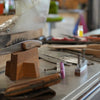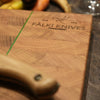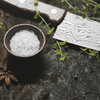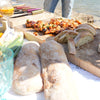Wooden cutting boards in the kitchen: our reliable companions
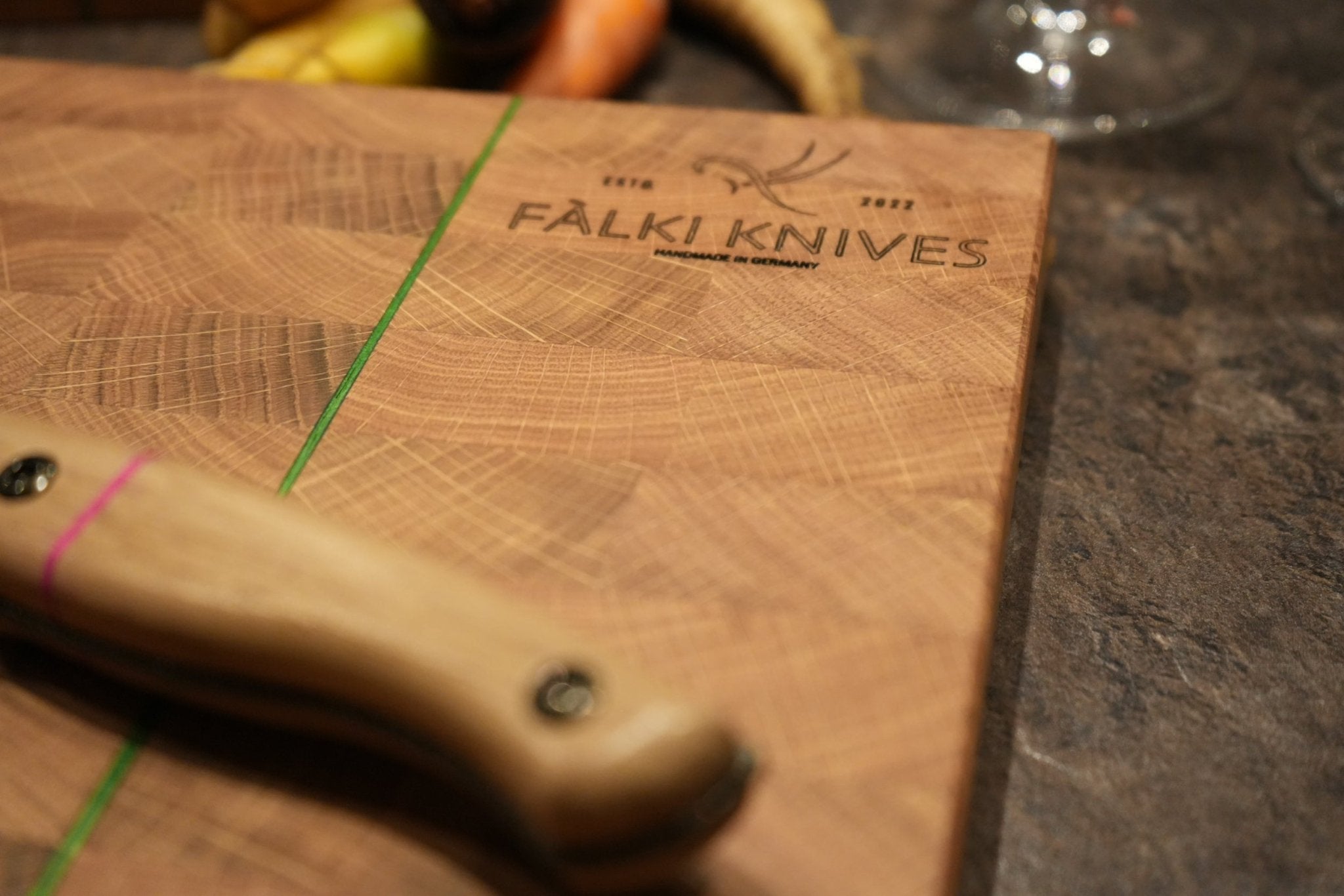
In today's kitchen world, there are a variety of materials to choose from when it comes to cutting boards, from plastic to glass to bamboo. But for me, there is nothing more beautiful and practical than a good old wooden cutting board. Not only does it look amazing, but it is also extremely functional. However, as with everything in life, the wooden cutting board also requires a certain amount of care and love. Today I want to talk about the best oil to use to keep your wooden cutting board in top shape.
Why wooden cutting boards?
Wooden cutting boards are a classic in the kitchen. They add a natural and warm touch to the work surface and are also extremely functional. But to ensure that they remain hygienic and in top shape, proper care is essential. Choosing the right oil is crucial.
Falki Knives care oil - my personal recommendation:
A product that I have recently discovered for the care of my wooden cutting boards and that has really won me over is the Falki Knives Care Oil. This specially developed oil is not only food-safe, but also made from natural ingredients. It protects the wood from moisture and bacteria while giving it a beautiful, rich color. I particularly appreciate that this oil does not leave any unwanted residue on my cutting boards. If you are looking for a care oil for your wooden cutting board, I can highly recommend Falki Knives Care Oil.
Other oils for wooden cutting boards:
In addition to Falki Knives care oil, there are other options that are well suited for wooden cutting boards:
-
Linseed oil: Linseed oil penetrates deep into the wood and gives it a glossy finish. However, it dries slowly, so you need to make sure it is allowed to cure properly before using the cutting board again.
-
Mineral oil: Mineral oil is a cost-effective and widely available option. It is tasteless, odorless and forms a protective layer on the wood.
-
Coconut oil: Coconut oil has natural antibacterial properties and adds a pleasant scent to the wood. However, it is solid at room temperature, so you may need to warm it slightly to apply it.
Cleaning:
Cleaning your wooden cutting board is just as important as maintaining it. Avoid putting the cutting board in the dishwasher as this can damage the wood. Instead, wash it by hand with warm soapy water and a sponge or brush. Rinse thoroughly and let it dry well, preferably in a vertical position so that air can circulate. This will prevent the formation of mold and unwanted odors.
The beauty of natural materials
One reason wooden cutting boards are so popular is because of their natural beauty. They add a warm and rustic feel to the kitchen that plastic or glass just can't provide. The natural pattern and warm colors of the wood are eye-catching and add character to your kitchen.
Gentle on the knives
Another key advantage of wooden cutting boards is that they are gentle on your knives. Unlike hard and inflexible materials such as glass or marble, which can damage the blades, wooden cutting boards offer a certain amount of cushioning. This protects the edges of your knives and extends their lifespan.
Hygienic and bacteria-resistant
Many people worry about the hygiene of wooden cutting boards, but the reality is that wood has naturally antibacterial properties. Studies have shown that bacteria die faster on wooden cutting boards than on other materials. Of course, proper care is crucial, but with regular cleaning and occasional oiling, wooden cutting boards will remain hygienically sound.
Durable and repairable
Wooden cutting boards are incredibly durable and can last for years if cared for properly. And if they develop scratches or stains after heavy use, they can easily be sanded down and refreshed with oil. This means you don't have to keep buying new cutting boards, which is not only good for your wallet, but also for the environment.
sustainability and environmental friendliness
Wood is a renewable resource, which means that using wooden cutting boards is environmentally friendly. When you choose a cutting board made from sustainably harvested wood, you are helping to protect and preserve forests.
Which wooden cutting board do you prefer in your kitchen? Do you have any special experiences or tips for caring for your wooden cutting boards?

